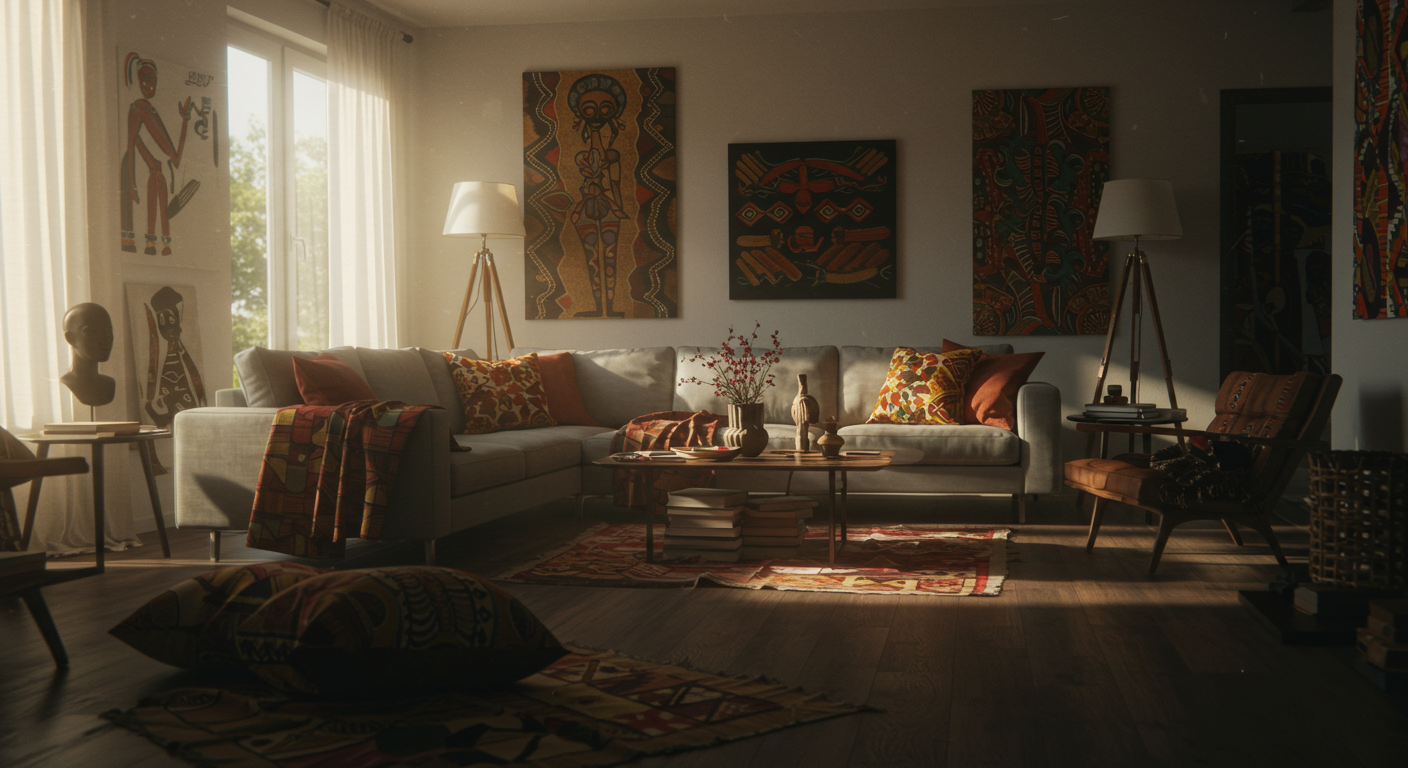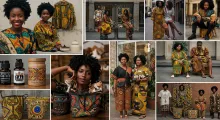Afro-Scandinavian design—also called Afro-Scandi—is an emerging interior design trend that fuses minimalist Nordic design with vibrant African heritage. It reflects a growing global interest in spaces that are both grounded and expressive, functional and soulful. This style is gaining traction in cosmopolitan cities around the world, particularly among people of African descent seeking to reconnect with their roots while embracing contemporary aesthetics.
Core Elements of Afro-Scandinavian Style
- Minimalism Meets Warmth: Scandinavian design is clean, minimal, and neutral-toned. African elements bring warmth, color, and storytelling.
- Neutral Bases with Bold Accents: Afro-Scandi interiors use beige, grey, or white walls as backdrops, with African textiles or artifacts adding depth.
- Natural Materials: Both styles emphasize wood, stone, wool, and leather. Add carved African stools, woven baskets, or mudcloth cushions.
Furniture and Layout
- Choose simple, functional Scandinavian furniture pieces (like IKEA) as your base.
- Layer African accessories like Kuba cloth, Adinkra symbols, or beaded accents.
- Mix low-seating arrangements (like Moroccan poufs or Ghanaian stools) with sleek Scandinavian chairs.
Textures and Textiles
- Integrate African textures like raffia, sisal, and barkcloth.
- Mix with soft Nordic throws, linen curtains, and smooth wood flooring.
Color Palette
- Afro-Scandi avoids loud colors in large quantities.
- Stick to base palettes like off-white, sand, grey, and taupe.
- Accent with mustard, indigo, burnt orange, and black.
Lighting and Ambience
- Use soft Scandinavian lighting: pendant lamps, floor lamps, and candles.
- Complement with African lanterns, calabash lighting, or rattan pendants.
Why It Works
- It's emotionally grounded—offering comfort and identity.
- Appeals to urban dwellers seeking simplicity without sacrificing culture.
- It’s eco-conscious—celebrating hand-made and natural materials.
Conclusion Afro-Scandinavian interior design is more than aesthetics; it is a lifestyle rooted in duality: stillness and spirit, heritage and modernity. As this style continues to grow, it presents an exciting opportunity to blend two powerful cultural identities into one harmonious home.



